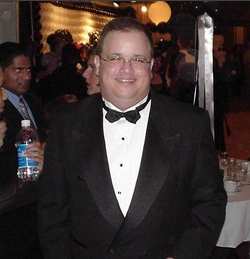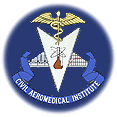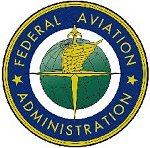What Is It Like To Be Put Through the Special Issuance Grinder?
(Part 3)
By ANN Correspondent Juan Jimenez
 So, a full seven months after my
medical exam for something that should have been resolved sometime
in 2002, I was still in a holding pattern, still waiting for
permission to fly. I was going stir-crazy because I could not do
the one thing that most helps me to relax, gather my thoughts and
make sense of what happens in my life.
So, a full seven months after my
medical exam for something that should have been resolved sometime
in 2002, I was still in a holding pattern, still waiting for
permission to fly. I was going stir-crazy because I could not do
the one thing that most helps me to relax, gather my thoughts and
make sense of what happens in my life.
I decided to send a FAX to the office of Dr. Jon Jordan, head of
the FAA's AeroMedical division, with a draft copy of this article,
and a note asking him to either comment on the issue or take action
to correct the problems it describes. What better way to jump-start
an issue such as this than starting an earthquake from the top
down, right?
It worked. Within twenty-four hours, I had no fewer than three
FAA employees calling me to find out what they could do to solve
the problem. For the second time, I had the pleasure of talking to
Dr. Steven Carpenter in the Special Issuance department. Dr.
Carpenter had called me once before and had graciously taken the
time to explain to me the requirements of the special issuance.
This time, he said that he had the package in hand and was going to
review it, which he did. Unfortunately he called again to let me
know he had bad news.
 The result of the stress was negative, but
the cardiologist who had reviewed the thalium images of my heart -
not my regular cardiologist - mentioned that there was evidence of
"possible ischemia" in the results. For those of you unfamiliar
with the terminology, this is another FAA red-flag word. In
layman's terms, the word "ischemia" means that some organ in your
body is not functioning properly because it is not getting enough
oxygen. In the case of the heart, the condition is evidenced by
reduced heart-muscle function when you are doing things like
exercising, hence the reason the doctor suspected he found it after
running me for several minutes on a treadmill. Any MD's reading
this who find any factual errors in my descriptions are urged to
email me a virtual two by four over the head and I'll be more than
happy to correct myself.
The result of the stress was negative, but
the cardiologist who had reviewed the thalium images of my heart -
not my regular cardiologist - mentioned that there was evidence of
"possible ischemia" in the results. For those of you unfamiliar
with the terminology, this is another FAA red-flag word. In
layman's terms, the word "ischemia" means that some organ in your
body is not functioning properly because it is not getting enough
oxygen. In the case of the heart, the condition is evidenced by
reduced heart-muscle function when you are doing things like
exercising, hence the reason the doctor suspected he found it after
running me for several minutes on a treadmill. Any MD's reading
this who find any factual errors in my descriptions are urged to
email me a virtual two by four over the head and I'll be more than
happy to correct myself.
Dr. Carpenter told me he needed to know that there was no
further blockage in that artery and that my heart was functioning
properly under stress. I had two choices. One was an angiogram,
a.k.a. roto-rooter - an outpatient procedure in which a small
incision is made in your groin, and a catheter is inserted and
threaded up to your heart, where a dye is released and pictures are
taken.
 The other option was a stress
echosonogram. This one is the same treadmill stress test. However,
instead of injecting chemicals into your body that make your mouth
taste as if you have been licking a crusty, old copper pipe, a
technician uses ultrasound imaging equipment to take a much more
detailed look at your heart in "real time." The entire procedure is
videotaped and analyzed with the help of a very fast computer. The
idea is to see how your heart muscle is performing under stress and
determine if there is any area that looks like it is not getting
enough oxygen-rich blood.
The other option was a stress
echosonogram. This one is the same treadmill stress test. However,
instead of injecting chemicals into your body that make your mouth
taste as if you have been licking a crusty, old copper pipe, a
technician uses ultrasound imaging equipment to take a much more
detailed look at your heart in "real time." The entire procedure is
videotaped and analyzed with the help of a very fast computer. The
idea is to see how your heart muscle is performing under stress and
determine if there is any area that looks like it is not getting
enough oxygen-rich blood.
I then asked Dr. Carpenter to please call my cardiologist and
explain this to him in Klingon, or whatever language it is that
doctors use among themselves, to eliminate any possible doubt. He
did, and they agreed the echosonogram would suffice. In late April
I scheduled myself for the expensive test. I was supposed to be on
the treadmill until my heart reached 50% over the resting pulse,
Stage III of what the dungeonmasters…. err, pardon
me… the technicians and the FAA refer to as the "Bruce
Protocol." I got to that stage, and then they decided "Heck, it's
for the FAA, keep going until he drops." I made Stage IV, 72% over
my resting pulse. The cardiologist, Dr. Eisen, inspected the
results and again told me, based on his extensive experience with
pilots in the Dallas/Fort Worth area and the FAA, that there was no
reason for the FAA to deny me the medical. He found zero evidence
of ischemia.
 In exactly one week all the results and
tracings were ready for pickup, so I drove to the doctor's office,
picked them up, then drove straight to the Federal Express drop-off
point to send everything to Dr. Carpenter. It's been two weeks
since I did that, and he hasn't responded to my email messages to
find out if he got the package and if he had made a decision to
issue the medical. I know the envelope was received the next day,
but I don't know if it has been given to him. The nice lady that
answers the phone and helps you check the status of the special
issuance says the computer has a record of the arrival of the
latest results, but at that point the Black Hole of Oklahoma takes
over and no other information is available.
In exactly one week all the results and
tracings were ready for pickup, so I drove to the doctor's office,
picked them up, then drove straight to the Federal Express drop-off
point to send everything to Dr. Carpenter. It's been two weeks
since I did that, and he hasn't responded to my email messages to
find out if he got the package and if he had made a decision to
issue the medical. I know the envelope was received the next day,
but I don't know if it has been given to him. The nice lady that
answers the phone and helps you check the status of the special
issuance says the computer has a record of the arrival of the
latest results, but at that point the Black Hole of Oklahoma takes
over and no other information is available.
So, here I am, in yet another holding pattern. I have no idea
what has happened since then. In the meanwhile, there are people
out there being inducted into aviation "halls of fame" who never
bothered to renew their medical certificates for more than twenty
years.
I received an e-mail a few weeks ago from someone who told me
that he has a friend who flies a Baron and does not have either a
medical or a pilot's license, and has been flying for thirty years.
I even have friends flying with pacemakers powered by old batteries
that could give up the ghost at any time.
 So… how does a citizen get
good service from the FAA?
So… how does a citizen get
good service from the FAA?
I do not have a clue, folks.
Maybe someone else can tell me. I have been able to heave and
shove the process forward due to my status as an aviation
journalist, but what about all the other folks that are being put
through this grinder?
I cannot imagine what it must be like to sit at home day after
day, week after week, month after month, not knowing what is going
on and not being able to do anything about it.
Marion Blakey, are you listening?
 ANN's Daily Aero-Linx (04.16.24)
ANN's Daily Aero-Linx (04.16.24) Aero-News: Quote of the Day (04.16.24)
Aero-News: Quote of the Day (04.16.24) Airborne 04.10.24: SnF24!, A50 Heritage Reveal, HeliCycle!, Montaer MC-01
Airborne 04.10.24: SnF24!, A50 Heritage Reveal, HeliCycle!, Montaer MC-01 Airborne 04.12.24: SnF24!, G100UL Is Here, Holy Micro, Plane Tags
Airborne 04.12.24: SnF24!, G100UL Is Here, Holy Micro, Plane Tags Airborne-Flight Training 04.17.24: Feds Need Controllers, Spirit Delay, Redbird
Airborne-Flight Training 04.17.24: Feds Need Controllers, Spirit Delay, Redbird







